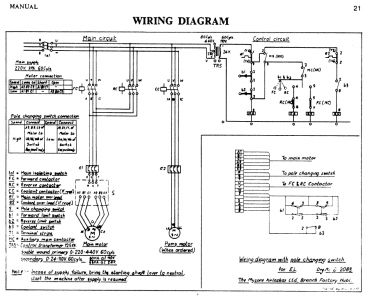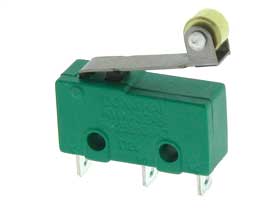- Joined
- Jun 10, 2019
- Messages
- 532
I have a lathe which has a 240v 3-phase, 2-speed pole-changing drum switch for selecting the motor speed. I'd like to add a pilot light to this switch when its in low or high to serve as a warning that the lathe is "hot".
The switch has 3 positions: off, low, and high. 9 total inputs: R/S/T, U/V/W-a, and U/V/W-b. The drum switch does not have any power to it until/unless the operator's spindle direction (on-off) lever is on. There aren't any additional terminal positions on the drum that I can take advantage of. The only thing could possibly use is continuity in any one of the legs. e.g. if R <-> Ua or R <-> Ub is connected.
Is there any way to get this to work without a lot of electrical gymnastics?
My only other option would be to modify the switch to add my own switch at the end of the drum switch's axle. There's very little room to do this - would take a bit of noodling to fabricate something.
The switch has 3 positions: off, low, and high. 9 total inputs: R/S/T, U/V/W-a, and U/V/W-b. The drum switch does not have any power to it until/unless the operator's spindle direction (on-off) lever is on. There aren't any additional terminal positions on the drum that I can take advantage of. The only thing could possibly use is continuity in any one of the legs. e.g. if R <-> Ua or R <-> Ub is connected.
Is there any way to get this to work without a lot of electrical gymnastics?
My only other option would be to modify the switch to add my own switch at the end of the drum switch's axle. There's very little room to do this - would take a bit of noodling to fabricate something.




